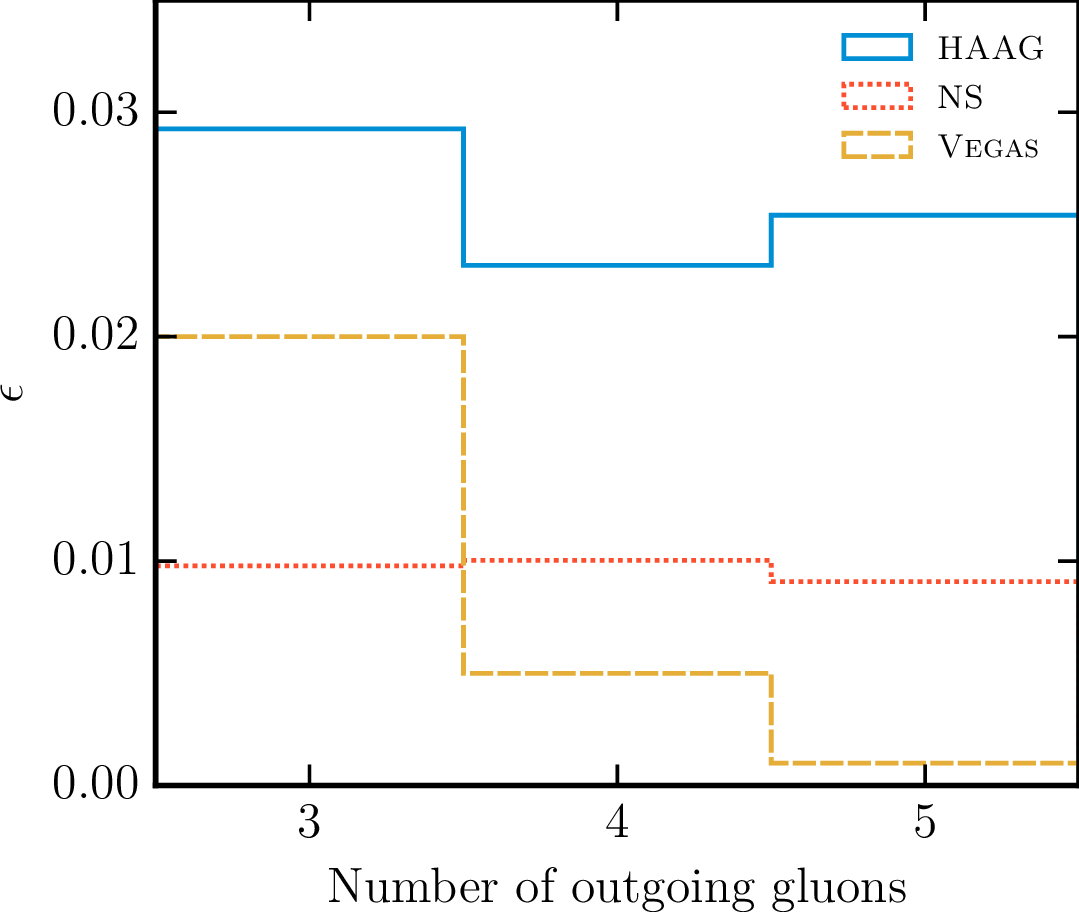Abstract
We present the first application of a Nested Sampling algorithm to explore the high-dimensional phase space of particle collision events. We describe the adaptation of the algorithm, designed to perform Bayesian inference computations, to the integration of partonic scattering cross sections and the generation of individual events distributed according to the corresponding squared matrix element. As a first concrete example we consider gluon scattering processes into 3-, 4- and 5-gluon final states and compare the performance with established sampling techniques. Starting from a flat prior distribution Nested Sampling outperforms the Vegas algorithm and achieves results comparable to a dedicated multi-channel importance sampler. We outline possible approaches to combine Nested Sampling with non-flat prior distributions to further reduce the variance of integral estimates and to increase unweighting efficiencies.
Lightning summary:
We propose an analogy between the Bayesian evidence $Z$ and the particle physics cross section $\sigma$,
$$ \sigma = \int\limits_\Omega d\Phi |\mathcal{M}|^2 (\Phi), $$ $$ \mathcal{Z} = \int d\theta \mathcal{L} (\theta) \Pi (\theta), $$
Where the matrix element, $\mathcal{M}$ and the likelihood, $\mathcal{L}$, play similar roles.
This analogy allows us to bring a state of the art tool to calculate the evidence, Nested Sampling (NS), to the particle physics context,

Which demonstrates promising dimensional scaling

This demonstrates a path forward to fix the impending crisis in calculating predictions for LHC physics
Presentation with more information - [yallup.github.io/bayeshep_durham]